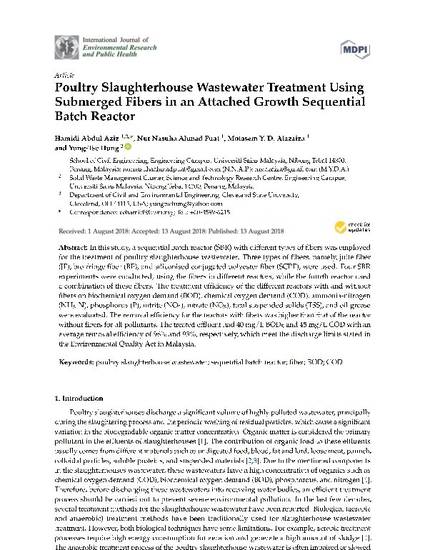
In this study, a sequential batch reactor (SBR) with different types of fibers was employed for the treatment of poultry slaughterhouse wastewater. Three types of fibers, namely, juite fiber (JF), bio-fringe fiber (BF), and siliconised conjugated polyester fiber (SCPF), were used. Four SBR experiments were conducted, using the fibers in different reactors, while the fourth reactor used a combination of these fibers. The treatment efficiency of the different reactors with and without fibers on biochemical oxygen demand (BOD), chemical oxygen demand (COD), ammonia-nitrogen (NH₃-N), phosphorus (P), nitrite (NO₂), nitrate (NO₃), total suspended solids (TSS), and oil-grease were evaluated. The removal efficiency for the reactors with fibers was higher than that of the reactor without fibers for all pollutants. The treated effluent had 40 mg/L BOD₅ and 45 mg/L COD with an average removal efficiency of 96% and 93%, respectively, which meet the discharge limits stated in the Environmental Quality Act in Malaysia.
Available at: http://works.bepress.com/yung-tse_hung/40/

Article #1734